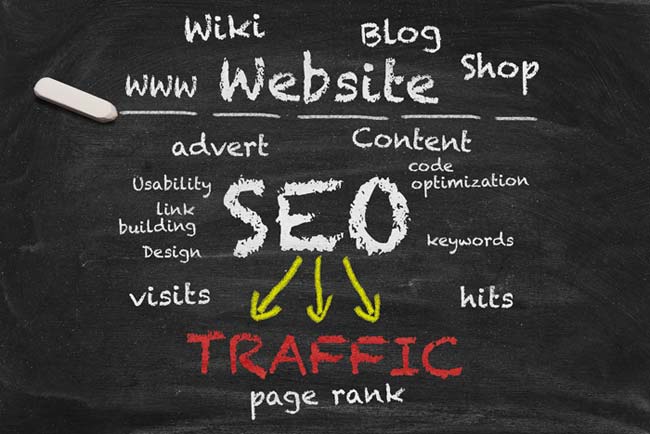Getting Into Keyword Heaven & Living in a Post Google Penguin World.
You’ve been following the Adster blogs, right? So you’ve had a read through Andrew’s article, posted May 10, where he talks about Google’s update, Penguin, and the blood it’s extracting for SEO sinners. And so, creating SEO-friendly content continues to evolve, becoming ever more a balance between doing it right, and just plain overdoing it. Now that Penguin’s here, transgressions NOT to commit include, but are not limited to, keyword stuffing, duplicate content, and heavy use of anchor text.
 SEO of the Future
SEO of the Future
Now that we know a bit more about what we’re not supposed to do, it may be a good moment to say a few more words about what makes good SEO content, that is, those words on your web pages that tell your customers all about how your business can greatly benefit THEM, and that will be indexed by search engines too. Used to be, way back in the Olden Days, a handsome brochure with some well-written compelling copy would do the trick. Not to say that printed brochures aren’t necessarily still important and vital to your sales process today, but the approach to writing a brochure vs. a web site has to be a little different. The differences can be subtle—there’s the art and science balance that Andrew was talking about in his May 24th post—but the differences are there because search engines, in addition to humans, are also reading your web site.
Questions arise: how long should a page be? How many keywords and phrases should be on a page? Do you just sprinkle them around like salt? How much is too much? How much is not enough? Not to mention, how do you figure out those darn keywords in the first place?
Great Content & Keywords Living in Harmony
Another question: so what comes first, the content or the keywords? The Right Answer might be a little more obvious if you ask yourself: who’s going to do the actual buying after all? Search engines? Of course not, silly, it’s people who are going to make the decisions to patronize your business. Or not. So your content should be, first and foremost, developed for your human readers. Make your content appropriate and useful to your readers, place calls for action near benefit-related text, and don’t forget your USP—your Unique Selling Proposition that tells your readers why you are just simply heads and tails above your competitors.
So, speaking procedurally, the recommended path—and it does make a lot of sense—is to write the content first, then review and edit to ensure that keyword usage is appropriate, both in terms of the words themselves, and the frequency with which they’ve been used. Other sagacious words of wisdom include placing your keywords/phrases at the start and at the end of your page (first and or last words/sentences/paragraph), as well in your headings and sub-heads, discussed in my Adster blog of May 21.
Content Length & Keyword Usage
How long should the page be? Well, some experts recommend about 250 words. Why 250 words? It’s a length that makes it easier to include key phrases while also honing the message. It’s a nice amount of content, too, that keeps your readers satisfied: adequate content provides a sense of security about your business. Okay, so what else? The same experts recommend using two to three keywords/phrases per page, and placing them three to four times within the copy. But remember, it all has to appear seamless, enhancing the content and appearing as a natural part of the flow.
How important is all this? Well, you’ve already read the research that says most users seldom browse past that first all-important page of search results. So if you don’t show up in the top five to 10 results, well, it’s just going to be a whole lot more difficult to get those customers in your door, virtual or otherwise. Oh, and to answer that last question—how do you figure out your keywords in the first place? The answer can be quite complicated, involving software tools, competitor reviews and so on. Or, for you, it can be really quite simple: Put Adster on your team and they’ll do the discovery for you, applying that mix of art and science that is SEO today.
 SEO of the Future
SEO of the Future